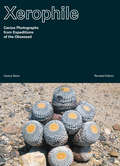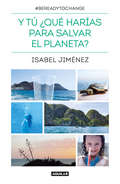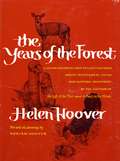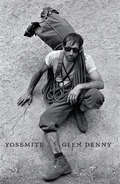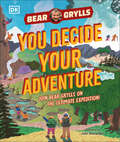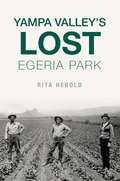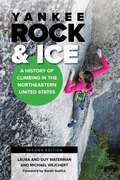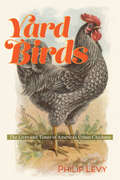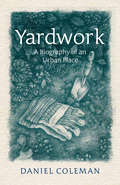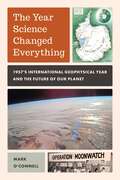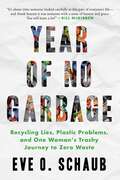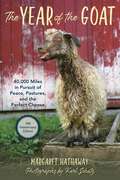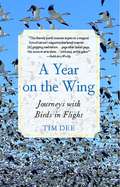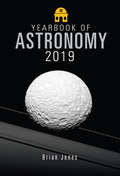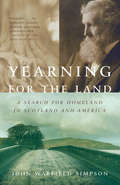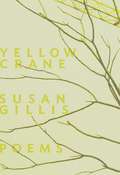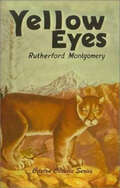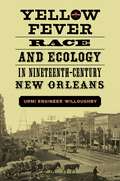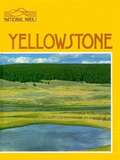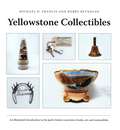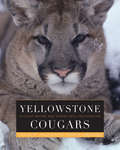- Table View
- List View
Xerophile, Revised Edition: Cactus Photographs from Expeditions of the Obsessed
by Edited by Cactus StoreAn updated edition of the cult classic, featuring stunning archival photographs of hundreds of the rarest and most spectacular plants on Earth, taken by a motley crew of cactus obsessives &“A catalogue of wonders that most of us will never get to see in person.&”—The New YorkerFrom the people behind Cactus Store comes Xerophile, a photographic collection of these improbable desert wonders in the wild. Drawing on the archives of twenty-five cactus obsessives—from PhD botanist to banker, art teacher to cancer researcher—this revised edition spans eighty years and features new and expanded descriptive notes for all 350+ photos.Xerophile brings together eighty years&’ worth of these explorers&’ remarkable images from some of the world&’s most remote habitats: a peculiar two-leaved plant that lives for millennia in the deserts of Namibia; succulents whose poisonous sap is used by hunters to fell large game in Angola; and cactus that live on snow-covered mountains in Bolivia, sink below ground level to survive droughts in Mexico, are pollinated by bats in Brazil, and grow in pure lava fields of the Galápagos Islands.
Xylotheque: Essays
by Yelizaveta P. RenfroTrees are guiding symbols for Yelizaveta P. Renfro in her life and in her work. Combining memoir and nature writing, this book comprises nine essays that represent different seasons and slices of time, not unlike the rings of a tree. No two rings are alike, but each accretes to the next, creating, section by section, a life.&“In these profound and moving essays, Yelizaveta Renfro applies a scientist&’s eye for detail and a reporter&’s investigative prowess to the essential questions of our nature, human and otherwise. Her personal and botanical inquiries into the themes of growth, death, and time evoke Annie Dillard and Edward Abbey.&”—Justin St. Germain, author Son of a Gun: A Memoir&“A book of raw power and unflinching wisdom, the kind that cannot be relegated to any particular time or period but which seems to speak out of eternity itself. Like Annie Dillard&’s For the Time Being, it dares to look without blinking at humanity&’s peculiar and brief place on this earth, and does so with integrity and poetical insight.&”—Robert Vivian, author of The Least Cricket of Evening
Y tú ¿qué harías para salvar el planeta?
by Isabel JiménezUn ensayo periodístico comprometido y valiente que aporta alternativas y soluciones a la contaminación producidad por el plástico. «No se trata de volver al pasado, se trata de buscar un futuro en el que tenga cabida el progreso, pero con soluciones sostenibles a los residuos. Apostemos por el consumo responsable», escribe Isabel Jiménez en Y tú ¿qué harías para salvar el planeta? Uno de los rostros más respetados de la televisión muestra su compromiso con la sostenibilidad y el medioambiente en un tema que exige soluciones ya: la reducción del consumo de plástico. El futuro del planeta está en nuestras manos, y la solución al problema también. Hay esperanza: todavía estamos a tiempo para cambiar el futuro. Es posible un consumo responsable que permita una reducción drástica de los plásticos de un solo uso. Se puede caminar hacia un nuevo modelo de producción más acorde con la naturaleza. Es hora de apostar por la economía circular: «Hacer más con menos, reducir la materia prima y reutilizar». Y el compromiso es de todos: de los gobiernos, de los empresarios, de los activistas públicos, de los ciudadanos y del propio sector del plástico. En palabras de la autora: «A todos nos debería importar qué está pasando en los mares, en los ríos y en los océanos». Convirtámonos en la generación del cambio, salvemos el planeta. Y tú ¿qué harías para salvar el planeta? es un nuevo reto en la carrera profesional de la periodista Isabel Jiménez. En sus páginas muestra su compromiso con el medioambiente y deja el sello de su estilo: rigor informativo y cercanía para convertir en realidad un objetivo necesario.
YEARS OF THE FOREST
by Helen HooverThis is a book that takes us inside the Hoovers' wilderness home during those sixteen Years of the Forest and lets us experience not only the joys and the techniques but also the challenges and travails of going it alone in the beautiful but not always accommodating wilderness, far from the technology and services that city people take for granted. It is a book of wilderness adventure, it is an education in the ingenuities of wilderness housekeeping, filled with practical details about making do, building and rebuilding, gardening for fun and for food, even advice about getting away from getting-away-from-it-all. Good times and Hard times, good neighbors and bad neighbors, the strains engendered by conflicting views--and passions--about the use of the environment: Mrs. Hoover shares her experience without stint. But above all--over, under, and all around her straightforward and practical approach to life in the wilderness--there is, as always, the sensitive and moving awareness of nature (especially of the animals with whom she and her husband shared the forest, often helping them through starving winters) that is the special quality of her writing and her life.
YOSEMITE IN THE SIXTIES
by Yvon Chouinard Steve Roper Glenn DennyThe sheer granite walls of Yosemite Valley galvanized a dedicated group of rock climbers in the 1960s, who saw the nearly holdless, glacier-polished faces as the purest form of challenge. The awesome Half Dome and El Capitan were first climbed in the late 1950s, ushering in a new era of rock climbing later known as the golden age of Yosemite climbing. During this era, the climbers of the sixties developed the techniques, tools, and philosophies that made Yosemite the most influential rock climbing arena in the world. In the spirit of the social changes of the sixties, a small group of committed climbers dropped out of mainstream work and society and took up residence in Camp 4, perfecting their skills and developing a unique social scene. This austere, boulder-strewn campground became the epicenter of the climbing world. It served both as a launching pad for spectacular feats and adventures and a refuge from them. Here plans were made, teams were formed, and the rest of life was lived. The significance of Camp 4 was recently recognized with its placement on the National Register of Historic Places.
YOU Decide YOUR Adventure: Join Bear Grylls on the Ultimate Expedition
by Bear GryllsEncourage the kids in your life to trade screen time for green time in Bear Grylls’ outdoor activities book!Imagine you could choose your own epic adventure with Bear Grylls…What would you do…and where would you go?Get ready to join outdoor adventurer Bear Grylls as you take on snowcapped mountains, craggy cliffs, exposed open grassland, dense forests, and raging water rapids. Just like on a real adventure, you’ll have to think fast – the choices you make will reveal which page you need to turn to in the book, just like a pick-your-own adventure story. But remember, choose carefully! Bear will be there to help guide you and give you some handy tips and tricks, but the decisions will be yours to make.An exciting, interactive adventure story from the one and only Bear Grylls:Kids can determine the outcome of the story by picking the path forward, helping develop critical thinking and problem-solving skillsScreen-free fun that promotes a love of the outdoors and can be read again and again to achieve a different outcomePacked full of nature facts to help kids learn about the natural world while they readSo, if you feel up for the challenge, get ready to decide your own outdoor adventure on the ultimate expedition!
Yampa Valley’s Lost Egeria Park (Lost)
by Rita HeroldCalled the "Last Frontier," the "Land of the Last Pioneers" and the "Place that Time Forgot," Routt County was among the last places settled in the continental United States. Between 1820 and 1845, notable people such as Kit Carson, Jim Baker and Jim Bridger were all known to visit the Yampa Valley. But it wasn't until the removal of the Utes in 1881 that Egeria Park flourished. Stagecoaches, railroads, cattle, grain and sawmills followed. And despite the remote location, it grew into an agricultural and economic hub, the exact boundaries of which are still contested. Alas, Egeria Park dissolved with time. Author Rita Herold uncovers sketches of lost heroes, scoundrels and everyday characters who made history here.
Yankee Mission: Thomas Kydd 25 (Thomas Kydd #36)
by Julian Stockwin'Yankee Mission is a jewel in Julian Stockwin's crown as a master in naval fiction, with a ship-to-ship fight so vivid that the battle's sounds and scents fly off the pages like lethal wooden splinters' - Quarterdeck1812. Off the coast of Brazil, HMS Java, a proud British 38-gun frigate, is captured in battle by the American USS Constitution - signaling across the world's oceans a challenge to Britain's naval premiership that cannot be ignored.Back in EnglandCaptainSir Thomas Kydd is enjoying a moment of normal life with his wife and his newborn son. With his Thunderer in dock receiving some well-earned repairs he is, momentarily, without a command. It's a position the Admiralty does not leave him in for long, and he is soon given a mission: engage the young republic in a fair fight, frigate against frigate, and restore the Navy's reputation. And they have just the ship and crew for him . . . Tyger. But on reaching the US east coast, Kydd and his trusted Tygers realise that the hardest part of their mission will be drawing out one of the Yankee men-o'-war to engage in battle - especially once the Americans get wind of his purpose. It's a tall order, requiring every ounce of the crew's guile and persistence - and when fortune turns against them, Kydd finds not only his career, but his life, hanging in the balance.Praise for Julian Stockwin's Kydd series:'A very readable and enjoyable story . . . I can only recommend that you go out, beg, borrow or buy, and enjoy' - Bernard Cornwell 'In Stockwin's hands the sea story will continue to entrance readers across the world' - Guardian'The characterization is first-class, and the reader quickly becomes involved with all that happens' - Historical Novels Review
Yankee Mission: Thomas Kydd 25 (Thomas Kydd #36)
by Julian Stockwin'Yankee Mission is a jewel in Julian Stockwin's crown as a master in naval fiction, with a ship-to-ship fight so vivid that the battle's sounds and scents fly off the pages like lethal wooden splinters' - Quarterdeck1812. Off the coast of Brazil, HMS Java, a proud British 38-gun frigate, is captured in battle by the American USS Constitution - signaling across the world's oceans a challenge to Britain's naval premiership that cannot be ignored.Back in EnglandCaptainSir Thomas Kydd is enjoying a moment of normal life with his wife and his newborn son. With his Thunderer in dock receiving some well-earned repairs he is, momentarily, without a command. It's a position the Admiralty does not leave him in for long, and he is soon given a mission: engage the young republic in a fair fight, frigate against frigate, and restore the Navy's reputation. And they have just the ship and crew for him . . . Tyger. But on reaching the US east coast, Kydd and his trusted Tygers realise that the hardest part of their mission will be drawing out one of the Yankee men-o'-war to engage in battle - especially once the Americans get wind of his purpose. It's a tall order, requiring every ounce of the crew's guile and persistence - and when fortune turns against them, Kydd finds not only his career, but his life, hanging in the balance.Praise for Julian Stockwin's Kydd series:'A very readable and enjoyable story . . . I can only recommend that you go out, beg, borrow or buy, and enjoy' - Bernard Cornwell 'In Stockwin's hands the sea story will continue to entrance readers across the world' - Guardian'The characterization is first-class, and the reader quickly becomes involved with all that happens' - Historical Novels Review
Yankee Mission: Thomas Kydd 25 (Thomas Kydd #36)
by Julian StockwinSwashbuckling adventure during the great Age of Sail.With Bonaparte held to a stalemate in Europe, the race to empire is now resumed. Britain's ambitions turn to the Spice Islands, the Dutch East Indies, where Admiral Pellew has been sent to confront the enemy's vastly rich holdings in these tropical islands. Captain Sir Thomas Kydd joins reinforcements to snatch these for the British Crown.The two colonial masters of India and the East Indies face each other in mortal striving for the region - there can be only one victor to hold all the spoils. The colonial genius, Stamford Raffles, believes Britain should strike at the very centre of Dutch spice production, the Moluccas, rather than the fortresses one by one but is fiercely opposed. Kydd, allying himself to this cause, conspires to lead a tiny force to a triumphant conclusion - however the Dutch, stung by this loss, claim vengeance from the French. A battle for Java and an empire in the East stretches Kydd and Tyger's company to their very limits.*************Praise for Julian Stockwin's Kydd series'In Stockwin's hands the sea story will continue to entrance readers across the world' Guardian'Paints a vivid picture of life aboard the mighty ship-of-the-line' Daily Express'This heady adventure blends fact and fiction in rich, authoritative detail' Nautical Magazine'Fans of fast-paced adventure will get their fill with this book' Historical Naval Society(P) 2022 Hodder & Stoughton Limited
Yankee Rock & Ice: A History of Climbing in the Northeastern United States
by Laura Waterman Guy Waterman Michael WejchertFirst published in 1993 and hailed as a classic, Yankee Rock & Ice is now reissued in a new edition with four new chapters covering the 1990s through today to bring the book up to date. This comprehensive and entertaining history of roped rock and ice climbing in the Northeast traces the growth of this popular sport in New England and New York and covers the first trailblazers of the eighteenth century through today&’s events and personalities. Well-known mountaineers and preservationists, Guy and Laura Waterman have explored every corner of the mountains of New England and New York and done solid historical research on first ascents of classic routes and the climbers who have made them legendary. Climber Michael Wejchert joins Laura for the work on the second edition.
Yard Birds: The Lives and Times of America’s Urban Chickens
by Philip LevyIn 2009, the New Yorker declared chickens the "it bird" and heralded "the return of the backyard chicken." This honor occurred as, a host of American cities were changing their laws to allow chickens in residents’ backyards. Philip Levy, a sometime chicken keeper himself, mixes cultural history with husbandry to chronicle the weird and wonderful story of Americans’ urban chickens. From the streets of Brooklyn to council chambers in Albany to the beat of Key West’s Chicken Nuisance Patrol, yard birds are an important and growing part of American city life.Part history, part travelogue, and part reportage, Yard Birds takes the reader on a tour-de-force journey across America, past and present, to profile its urban chickens housed in luxury coops or dying at yearly rituals. What emerges is a compelling picture of city chickens that can both serve as hipster status symbols and guarantee that the families keeping them have at least something to eat. Levy’s smart and entertaining investigation of the contemporary urban chicken craze reveals that poultry flocks were historically an integral part of America’s urban spaces; chickens have simply returned home now, some to very fancy roosts.
Yardwork: A Biography of an Urban Place
by Daniel ColemanShortlisted: 2018 RBC Taylor Prize for Literary Non-fiction How can you truly belong to a place? What does being at home mean in a society that has always celebrated the search for greener pastures? And can a newcomer ever acquire the deep understanding of the land that comes from being part of a culture that has lived there for centuries? When Daniel Coleman came to Hamilton to take a position at McMaster University, he began to ask himself these kinds of questions, and Yardwork: A Biography of an Urban Place is his answer. In this exploration of his garden – which Coleman deftly situates in the complicated history of Cootes Paradise, off of Hamilton Harbour – the author pays close attention to his small plot of land sheltered by the Niagara Escarpment. Coleman chronicles enchanting omnivorous deer, the secret life of water and the ongoing tension between human needs and the environment. These, along with his careful attention to the perspectives and history of the Six Nations, create a beguiling portrait of a beloved space.
Year Science Changed Everything: 1957's International Geophysical Year and the Future of Our Planet
by Mark O'ConnellIn 1957, 6,000 scientists from 66 nations achieved the impossible: they erased political borders for 18 months to unlock Earth's greatest mysteries—and changed science forever. The International Geophysical Year (IGY) of 1957 marked humanity's first unified effort to understand our planet, launching the space race, discovering the Van Allen radiation belts, and producing groundbreaking climate research that shapes our world today. Through exclusive interviews with modern climate leaders—including the late marine biologist and climate researcher Dr. Wallace J. Nichols, science diplomat and Senior Fellow at United Nations Institute for Training and Research Paul Arthur Berkman, Frank Niepold at the National Oceanic & Atmospheric Administration (NOAA), science historian Rebecca Charbonneau, and many more—author Mark O'Connell reveals how this historic collaboration offers a blueprint for tackling today's environmental challenges. Key discoveries from this groundbreaking initiative: Sparked the space race and satellite technology development Led to the first comprehensive mapping of ocean floors Produced the Antarctic Treaty, protecting an entire continent Established the foundation for modern climate science Created a model for international scientific cooperation As climate change threatens our planet, The Year Science Changed Everything shows how the spirit of global scientific unity that transformed 1957 might be our best hope for safeguarding Earth's future.
Year of No Garbage: Recycling Lies, Plastic Problems, and One Woman's Trashy Journey to Zero Waste
by Eve O. Schaub"Eve&’s brave and honest experiment reveals the shocking impact of the throwaway society we&’ve become and at the same time showing small ways we can all do better.&” —Rebecca Prince-Ruiz, founder of Plastic Free JulyYear of No Garbage is Super Size Me meets the environmental movement. In this book Eve O. Schaub, humorist and stunt memoirist extraordinaire, tackles her most difficult challenge to date: garbage. Convincing her husband and two daughters to go along with her, Schaub attempts the seemingly impossible: living in the modern world without creating any trash at all. For an entire year. And- as it turns out- during a pandemic. In the process, Schaub learns some startling things: that modern recycling is broken, and single stream recycling is a lie. That flushable wipes aren&’t flushable and compostables aren&’t compostable. That plastic drives climate change, fosters racism, and is poisoning the environment and our bodies at alarming rates, as microplastics are being found everywhere, from the top of Mount Everest to the placenta of unborn babies. If you&’ve ever thought twice about that plastic straw in your drink, you&’re gonna want to read this book.
Year of the Goat: 40,000 Miles in Pursuit of Peace, Pastures, and the Perfect Cheese
by Margaret HathawayMany people dream of leaving the workaday world for a life of simplicity and freedom, and Margaret Hathaway and her then-boyfriend Karl did just that. In The Year of the Goat, the reader can jump in the &“goat mobile&” with them as they ditch their big-city lifestyle to trek across forty-three states in search of greener pastures and the perfect goat cheese. Along the way, the reader is introduced to a vivid cast of characters—including farmers, breeders, cheese makers, and world-class chefs—and discovers everything there is to know about goats and getting back to the land. But readers beware: When it comes to goat cheese, it can be love at first bite.
Year on the Wing
by Tim DeeBirds--those "upgiven ghosts" who shape our skies--and their many styles of flying have inspired us for centuries. Enthralled with birds since he was a young boy, Tim Dee describes their allure in compelling, poetic prose as he follows these magnificent creatures on land, at sea, and in the air over the course of a year. A memoir of the author's life as well as a stirring account of bird migrations and the enticements of flight, the book explores the ideas and feelings that birds awaken by their flying. A Year on the Wing is also a significant chronicle of Dee's rich reading of a gorgeous literary and naturalist tradition about birds, and achieves a marvelous commingling of nature and language, finding meaning and a fascinating beauty in the quiver of a redstart's tail, in the thrilling skydiving stoop of the once-endangered now resurgent peregrine falcon, and the nocturnal restlessness of migrant woodcocks. Watching birds instills a renewed sense of wonder in us all, and this beautifully written memoir celebrates birds and the inspiration they give as it expands our horizons.e inspiration they provide through their twice-yearly winged migrations.
Yearbook of Astronomy, 2019
by Brian JonesAn inspiration to amateur and professional astronomers alike, the Yearbook of Astronomy warrants a place on the bookshelf of all sky watchers and stargazers. Maintaining its appealing style and presentation, the Yearbook of Astronomy 2019 contains an authoritative set of sky charts and comprehensive jargon-free monthly sky notes to enable backyard astronomers everywhere to plan their viewing of the years eclipses, comets, meteor showers and deep sky objects.In addition, a variety of entertaining and informative articles present the reader with information on a wide range of topics including, among others, The Cassini-Huygens Mission to the Saturn System; 100 Years of the International Astronomical Union; The First Micro-Quasar; Getting the Measure of Double Stars; Asaph Hall: Man of Mars; and Science Fiction and the Future of Astronomy.The Yearbook of Astronomy has been around for well over half a century and, as it heads towards its Diamond Jubilee edition in 2022, continues to be essential reading for anyone lured by the magic of astronomy and who wants to extend their knowledge of the Universe and the wonders it plays host to.
Yearning for the Land: A Search for the Importance of Place
by John W. SimpsonA beautiful, meditative memoir mixed with travel and history, this unique book is the story of one American's search for a deeper connection to the land. Drawn by a sense that he is missing a critical link to his home in suburban Ohio, John W. Simpson heads for rural Scotland, where he encounters his own family history as well as estate owners and tenant farmers who have centuries-long ties to their land. As he travels, he meditates on the legacy of the great 19th century conservationist John Muir, who himself developed a complex love of the land when he immigrated from Scotland's North Sea coast to the fields and forests of Wisconsin. As Simpson physically retraces Muir's journey he wonders what sense of belonging Muir found on the frontier that modern America, with its strip malls and housing developments, has forgotten. A fascinating story of changing perceptions and values from the Old World to the New, Yearning for the Land shows us just how much roots matter--both in our own lives, and in the many ways time and history, landscape and community are tightly intertwined.From the Trade Paperback edition.
Yellow Crane
by Susan GillisInviting, human, capacious poems that grapple with ideas while also lightly grieving our capacity for ruin.
Yellow Eyes
by Rutherford MontgomeryYellow Eyes raised and faced about. His amber eyes shone and his ears were laid back. In an instant he struck again and sent the leader of the pack hurtling from the cliff. Against dogs, man, and natural enemies the fierce American cougar fights to keep his rule supreme in the high mountain country of the West.
Yellow Fever, Race, and Ecology in Nineteenth-Century New Orleans (The Natural World of the Gulf South #8)
by Urmi Engineer WilloughbyThrough the innovative perspective of environment and culture, Urmi Engineer Willoughby examines yellow fever in New Orleans from 1796 to 1905. Linking local epidemics to the city’s place in the Atlantic world, Yellow Fever, Race, and Ecology in Nineteenth-Century New Orleans analyzes how incidences of and responses to the disease grew out of an environment shaped by sugar production, slavery, and urban development.Willoughby argues that transnational processes—including patterns of migration, industrialization, and imperialism—contributed to ecological changes that enabled yellow fever–carrying Aedes aëgypti mosquitoes to thrive and transmit the disease in New Orleans, challenging presumptions that yellow fever was primarily transported to the Americas on slave ships. She then traces the origin and spread of medical and popular beliefs about yellow fever immunity, from the early nineteenth-century contention that natives of New Orleans were protected, to the gradual emphasis on race as a determinant of immunity, reflecting social tensions over the abolition of slavery around the world.As the nineteenth century unfolded, ideas of biological differences between the races calcified, even as public health infrastructure expanded, and race continued to play a central role in the diagnosis and prevention of the disease. State and federal governments began to create boards and organizations responsible for preventing new outbreaks and providing care during epidemics, though medical authorities ignored evidence of black victims of yellow fever. Willoughby argues that American imperialist ambitions also contributed to yellow fever eradication and the growth of the field of tropical medicine: U.S. commercial interests in the tropical zones that grew crops like sugar cane, bananas, and coffee engendered cooperation between medical professionals and American military forces in Latin America, which in turn enabled public health campaigns to research and eliminate yellow fever in New Orleans.A signal contribution to the field of disease ecology, Yellow Fever, Race, and Ecology in Nineteenth-Century New Orleans delineates events that shaped the Crescent City’s epidemiological history, shedding light on the spread and eradication of yellow fever in the Atlantic World.
Yellowstone
by Carol MarronDescribes the geography, including the geysers, hot springs, mud pots, and fumaroles, and plants and animals of Wyoming's Yellowstone Park. Includes a history of the park.
Yellowstone Collectibles: An Illustrated Introduction to the Park's Historic Souvenirs, Books, Art, and Memorabilia
by Michael H. Francis Bobby ReynoldsThis book is about the myriad of Yellowstone National Park collectibles and souvenirs, from 19th-century horseshoes dipped in the park&’s thermal springs to contemporary books and artwork. Included are exquisite hand-painted Limoges porcelain, historic sand-bottle curios, stagecoach and railroad paraphernalia, rare books, photographs, jewelry, store-bought souvenirs, toys, dinnerware, employee items, paintings, postcards, brochures, keys, spoons, clothing, knickknacks, and more. The book highlights nearly 600 items. Each item is displayed in an exhibition-quality color photograph that shows true colors and details. Moreover, the descriptive text was written by 14 experts in their respective collecting fields, and all text was peer reviewed for accuracy. The text explains the numerous types of collectibles, their features and characteristics, their abundance or rarity, and their importance. For collectors, this book is a valuable guide and reference. For fans of the park, this book shows a new way of appreciating Wonderland and may inspire a Yellowstone collection of their own, because these collectibles reveal reams of park history—history that you can hold in your hand.
Yellowstone Cougars: Ecology before and during Wolf Restoration
by Toni K. Ruth Polly C. Buotte Maurice G. HornockerYellowstone Cougars examines the effect of wolf restoration on the cougar population in Yellowstone National Park—one of the largest national parks in the American West. No other study has ever specifically addressed the theoretical and practical aspects of competition between large carnivores in North America. The authors provide a thorough analysis of cougar ecology, how they interact with and are influenced by wolves—their main competitor—and how this knowledge informs management and conservation of both species across the West. Of practical importance, Yellowstone Cougars addresses the management and conservation of multiple carnivores in increasingly human-dominated landscapes. The authors move beyond a single-species approach to cougar management and conservation to one that considers multiple species, which was impossible to untangle before wolf reestablishment in the Yellowstone area provided biologists with this research opportunity. Yellowstone Cougars provides objective scientific data at the forefront of understanding cougars and large carnivore community structure and management issues in the Greater Yellowstone Ecosystem, as well as in other areas where wolves and cougars are reestablishing. Intended for an audience of scientists, wildlife managers, conservationists, and academics, the book also sets a theoretical precedent for writing about competition between carnivorous mammals.
